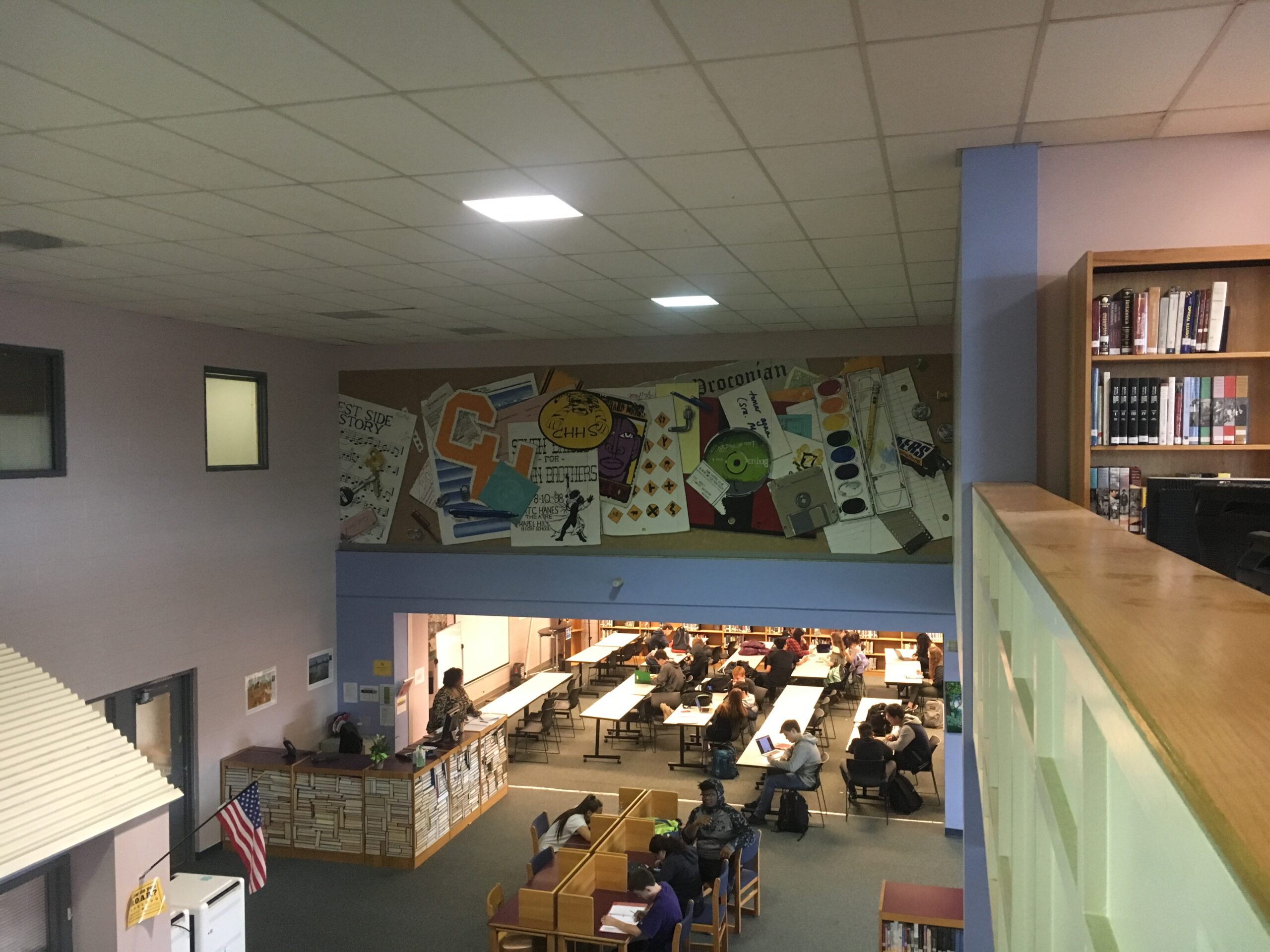Twenty years ago, a group of students spent three years working on the large mural that is now featured prominently in the library. They did so with the help of Chapel Hill High School alumnus Michael Brown, class of 1973, who also painted the tiger murals by the athletic fields.
Brown studied art at the University of North Carolina at Chapel Hill. After graduating, he taught art to elementary and high schoolers in New York City.
“It was a rough neighborhood. They brought me in because I was a big, tough, bullman type guy,” Brown said.
He began his artistic career by painting people’s houses. From there, he transitioned to painting large murals.
“I just paint these giant paintings, and people have kept calling me up for 30 years,” he said.
The librarian in 1998, Mary Gray Leonard, was the faculty sponsor of the Mural Club at the school and suggested the idea of adding a mural to the library.
“One day, I was looking out around the media center, and I realized that the whole media center could use more color. The large wall above that new space was the perfect spot for a mural,” Leonard said.
Leonard recruited Brown to help the students.
The mural depicts a “bulletin board” filled with items representing high school life, such as school supplies, a driver’s education pamphlet, a Chapel Hill bumper sticker and even a Proconian newspaper.
“Students brought in objects to be included in the collage, and Michael then helped arrange the items, took photographs, and taught the students the grid system of enlargement, which used a projector to enlarge the images,” Leonard said. “One of the greatest benefits was for students to have the opportunity to learn from and work with artist Michael Brown to leave a lasting legacy for other students for years to come.”
The library mural was unveiled on May 31, 1998, making this year the 20th anniversary of the painting. “On seeing the mural for the first time, one student exclaimed, ‘Oh my gosh! It is awesome! That is my life on that wall for the last three years,’” Leonard said.
Instead of being painted directly onto the wall, the mural is made up of seven masonite panels. Therefore the mural can be preserved when the current school building is torn down next year. According to Principal Sulura Jackson, there are currently no plans to preserve the mural because the building committee has not yet gotten to the furniture and design aspect of the building process.
Brown said he enjoyed coaching the students through the process. “They did a beautiful job for high school kids,” he said.
The tiger murals, on the other hand, were more of an adult job, according to Brown.
“They solved the problem of the big, ugly, blank wall and gave the high school a gift by hiring me to come and paint some big tigers,” Brown said.
The tigers serve as a well-known symbol for students and a meeting place for many, specifically the cross country team. The runners start almost all their runs from “the tiger,” both for practice after school and for runs on the weekends.
“They add color to our dreary campus and are a convenient landmark,” junior and cross country runner Mia Hoover said.
While at Chapel Hill High School, Brown was a captain and goalkeeper on the state championship soccer team. “I was glad to get called for [the tiger murals] because that was the field I used to play soccer on,” he said.
Since there are no plans to remove the building by the football field during the reconstruction of Chapel Hill High School, the tiger murals will stay intact when the new school is built.
Brown attributes much of his success as an artist to his high school art teacher Eric Baylin.
“His teaching probably had as much to do with the success of my career than anyone in my life, just because of the very good lessons that he taught,” Brown said.
Many other murals around the town of Chapel Hill, such as the turtle mural near Franklin Street, were also painted by Brown. “That was a fun one—lots of good color,” he said.
